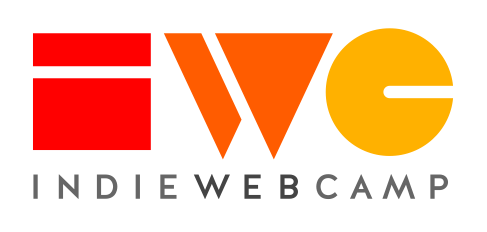2025/Düsseldorf/personalcms
Personal website management was a discussion session at IndieWebCamp Düsseldorf 2025.
Watch: ▶️ 51:07s
Archived from: https://etherpad.indieweb.org/personalcms
Participants
- Template:jakob
 Joschi Kuphal
Joschi Kuphal Daniel Pietzsch
Daniel Pietzsch Tantek Çelik
Tantek ÇelikDavid Shanske
- ... add names
Notes
Joschi:
- I like using an ASCIIdoc workflow because Markdown doesn't have the features I want.
- Biggest challenge: maintaining systems, plugins, libraries
- really picky about the markup that is created. I want it lean, accessible. I want control of the markup, and I don't trust any system that claims to be accessible.
- I only work on it at IndieWebCamps, like twice a year
Daniel:
- can have hosting challenges
- not a fan of a database
- like flat files like what Kirby does
- at one point I decided to not use a database
Challenges with upgrading Kirby to keep up with PHP versions, then can have breaking changes
Tantek:
- I still have to depend on PHP 7.x, would like to fix problems in my PHP to work on PHP 8.
Christian:
- For the last upgrade I did to an old PHP code, I was consulting ChatGPT and it worked
Joschi:
- lowest level is the content
- being able to just write the content in a way you can read it
- started with Markdown but switched to ASCIIdoc
- first layer on top would be a file system on top to organize your content (text files)
- next layer is to put a webserver to serve the files
- next layer is to transform it to HTML, then add CSS to make it pretty, then add interactivity
- longevity, not relying on databases. databases breaks longevity. introduces technology to your content that makes your content dependent on technology. if the technology becomes outdated, then it breaks your content.
Gunnar showing how he does it by sharing his screen:
- on gunnarbittersmann.de he writes plain HTML, no CMS at all
- on bittermann.de/startrek he uses JSON+Ld files as data sources: https://bittersmann.de/startrek/series/snw.jsonld
- The JSON+Ld files are public so that anyone can do what they wnat with it.
- The then built a frontend via a PHP layer
- Schepp rembers a project where JSON was delivered with HTML mime type and had a script tag in the JOSN structure that gets picked up by the browser's parser and makes it transform it into a full HTML page
- Tantek never had an attempt at storing his content in JSON as he uses to forget the syntax and when he is revisiting JSON he has a hard time decoding it
- Someone points at the possibility of using XML instead of JSON. Tantek finds this to be even more complicated.
- Gunnar also leaves the metadata in his rendered output
- Joschi prefers markdown or Asciidocs more as ** the way you store the data is closer to the way you present the data
Tantek is presenting his way of doing things, sharing the screen:
- in his old blog he did (static) flat files, one per month, and links would point to those files with anchor links
- He added a lot of structure to it to be able to very granularly link to content inside it
- He also played with swapping out the stylesheet for a new one for each one of the flat files (or even new edits of it), while keeping the HTML structure consistent - basically a CSS Zen Garden approach
- Tantek finds static files to be a good start and also documenting the way one takes over the course of time
- For his current blog, Tantek stores data in HTML, enriched with microformats, e.g. https://tantek.com/2025/1.html
- For his notes, though, he just embeds them as a kind of plaint text markdown/YAML-esk snippet inside that HTML. He has a transformation system, that picks them up and converts them based on certain conventions into something richer based on class names.
- The reason for going for such a mix is that he didn't want to have to write everything down in HTML
- Gunnar see a lot of resemblance with markdown, to which Tantek agrees, but his "dialect" is without markdown's bad parts (from his personal view)
- As technology he uses self-rolled PHP but that keeps him from just editing and publishing from his smartphone
Summary of this session is that HTML is a great format for longevity and it's also a very versatile data source format.
<pre style="white-space:pre-wrap; font-family:inherit">
Here is a plain text note.
Here is a really long line.... Here is a really long line....Here is a really long line....Here is a really long line....Here is a really long line....Here is a really long line....Here is a really long line....Here is a really long line....Here is a really long line....
Line breaks will work.
So will leading spaces! Or multiple spaces: " "
</ pre>
Schepp adds that the rather new Custom Highlight API (https://developer.mozilla.org/en-US/docs/Web/API/CSS_Custom_Highlight_API) could also be used to prettify such <pre> wrapped code.
- ... add notes
